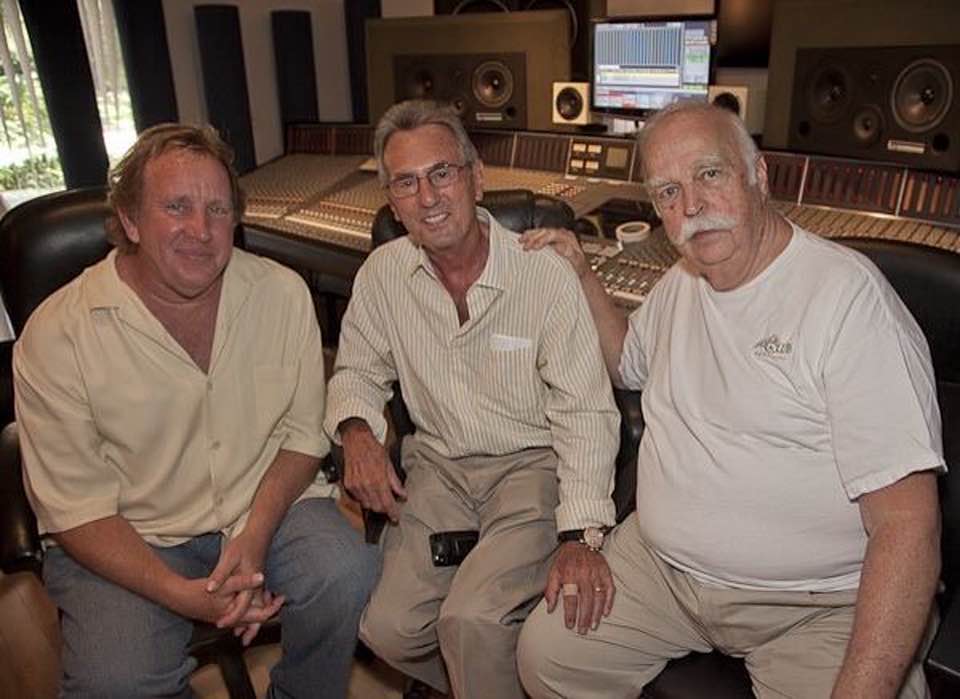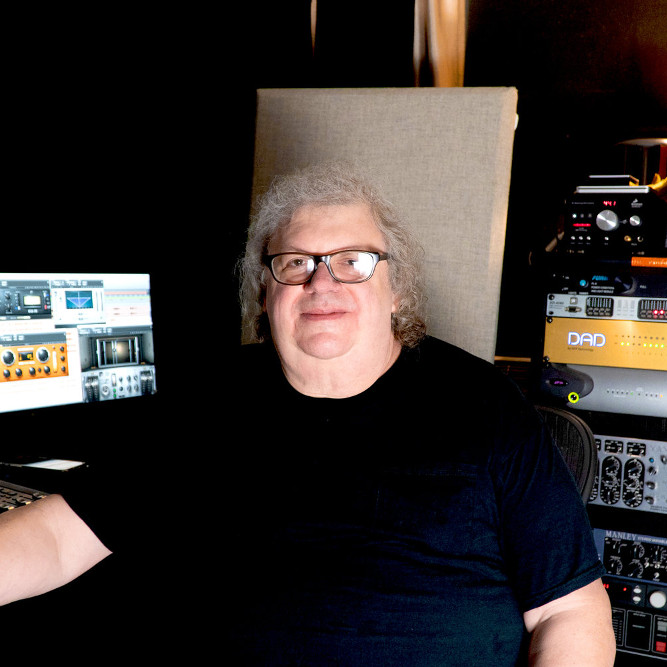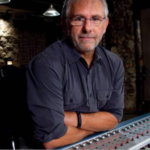RIP Bruce Swedien: Chart-Shattering Mixer and Engineer for Michael Jackson & “Thriller”
“The word ‘legend’ is overused so much, but Bruce was a real legend.”
Those are the words of Al Schmitt, whose 23 Grammy Awards have established him as a legend in his own right. As a friend and confidant of Bruce Swedien, he got to know another audio legend up close and personal. Sadly, Schmitt was saying these words on Swedien’s passing, which happened on November 16, 2020. Swedien was 86.
Swedien was almost as humble, unassuming, and approachable as he was successful in the studio. We say “almost” due to his truly unequaled audio achievements: When you’ve engineered and mixed the #1 best-selling album of all time, as Swedien did with Michael Jackson’s global smash Thriller, you’ve set a lofty standard to live up to.
“Bruce had no boundaries,” Schmitt reflects. “He was not only an amazing engineer with great ears, but an amazing personality. He was warm, and he had no secrets. You wanted to know how he did something? Just call him on the phone and he’ll tell you exactly how he did it. I think that’s true of all the really great engineers: Ed Cherney, Tom Dowd—these guys knew how good they were. They weren’t afraid of somebody stealing their stuff.”
His career launched in his native Minneapolis at age 14, where Swedien was originally inspired by the soulful music he heard emerging from a Black church near his childhood home. He majored in electrical engineering and minored in music while studying at the University of Minnesota, building up his studio chops by recording jazz, choirs, polka, and ads for radio airplay.
Swedien’s first breakthrough was engineering the landmark single “Big Girls Don’t Cry” by Frankie Valli and the Four Seasons, kicking off a hit parade that went on for decades. Jazz, R&B, soul and pop were all in his wheelhouse. It was his work on the 1978 movie version of The Wiz that introduced him to Michael Jackson, collaborating on a soundtrack that was primarily produced by Quincy Jones.

Four years later, they would prove to be an unbeatable trio—artist, producer, and engineer—entering LA’s Westlake Studios together to capture an album that would live up to Jackson’s vision of a record devoid of filler. They did it, and listeners worldwide responded: seven of its nine songs were Top 10 hits, Thriller won a record eight Grammy Awards in 1984, has been certified 33X platinum in the US, and sold an incredible 66 million copies to date.
It was all part of a hugely prolific continuum for Swedien, a five-time Grammy winner. Just a partial list of his recording/mixing credits includes Count Basie, Art Blakey, Duke Ellington, Dizzy Gillespie, Lionel Hampton, Quincy Jones, Herbie Hancock, Patti Austin, Natalie Cole, Roberta Flack, Mick Jagger, Jennifer Lopez, Paul McCartney, Diana Ross, Chaka Khan, Barbra Streisand, Lena Horne and Donna Summer.
In Control
None of Thriller’s numbers, however, reflect its far-ranging impact on audio. For multiple generations of audio engineers, tracks like “Beat It,” “Wanna Be Startin’ Something,” “Billie Jean,” and “Human Nature” would stand as unassailable reference tracks. They were optimal for calibrating ears and speakers in critical listening environments due to the crystal-clear detail, punch, and musicality that Swedien built up from his distinctive recording and mixing techniques, making the very most of Jackson’s talents when the superstar singer was at the top of his game.
“It’s amazing,” Schmitt said of Thriller. “When I first heard it, I said, ‘I have to call Bruce!’ It blew me away. Everything was right there, in-your-face, and perfect.”
According to Schmitt, Swedien’s sonic mastery started with his studio demeanor. “He was the engineer that had total control,” states Schmitt. “He knew where everything was, and what he was doing. I know how much Quincy relied on Bruce. He didn’t tell him what to make things sound like—that was left up by Quincy to Bruce. He worked so well with Quincy. That’s the right kind of marriage, when you have someone you admire and can make great records with. You both bring something to the table.”
To Schmitt, Swedien’s discography contains invaluable lessons for young engineers today. “Get a bunch of Bruce’s albums and start listening,” he urges. “You’ll get an idea of balance, how an instrument should sound. I think that alone is a great learning process. All you have to do is listen to Bruce Swedien’s records, and you have something to aim for.”
A Mixer’s Mixer
In 1982, Mick Guzauski had already established himself as an in-demand engineer and mixer, in the midst of a career that credits him with 27 #1 hits and counting. Guzauski just happened to be working at Westlake with Earth Wind & Fire at the same time as the Thriller sessions were taking place. Decades later, Sony would commission him to perform the official 5.1 mix of Thriller, a thrilling immersive listening experience that sadly remains as-yet unreleased.
“The mixes were so inspiring, so amazing on that record,” Guzauski says. “The way Bruce Swedien created so much space, used echo, the balances, and the overall warmth of the sound. He’s one of the greats. I always aspired to that in my work.”
As the engineer and mixer for Daft Punk’s Random Access Memories, Guzauski knows what it takes to create an album universally recognized for its studio reference qualities (read the full story of his experience making the record here). For Guzauski, Thriller served as a sonic pacesetter.
“I think Bruce was one of the first guys to combine a really natural, spatial, acoustic sound with a very immediate, present, punchy low end,” he observes. “Before that, mixers did punchy R&B mixes, but Bruce’s concept was this great present rhythm section with really nice natural space and realism.”
Guzauski got a unique listen to Thriller when the multitracks were shipped to his studio. “The album actually didn’t have that many tracks because Bruce premixed a lot of it—background vocals, strings, horns, were mixed down to stereo,” he recalls. “It wasn’t a difficult mix for me, just decisions of where to position things in 5.1. The multitracks just sounded immaculate. Bruce’s work on that record and many more show why recording and mixing isn’t just about getting a great sound on something—it’s how everything works together.”
“He Did Things His Own Way”
Producer/engineer/mixer Elliot Scheiner, an eight-time Grammy winner to go along with his 25 Grammy nominations, saw Bruce Swedien as the consummate engineer.
“He came up a time when you really needed to know what you were doing and how to go about it,” Scheiner says. “He understood everything there was to understand. He did things his own way and everyone respected him for it. He brought a sense of you-have-to-know-what-you’re-doing to deal with someone of Michael Jackson’s caliber. You had to know how to deal with the artists, be able to get them to give you forty vocal takes and say, ‘We’re not there yet,’ or ‘We are.’
“Bruce Swedien had that sense about him. He never did anything wrong. He always did everything right.”
— David Weiss

Please note: When you buy products through links on this page, we may earn an affiliate commission.









